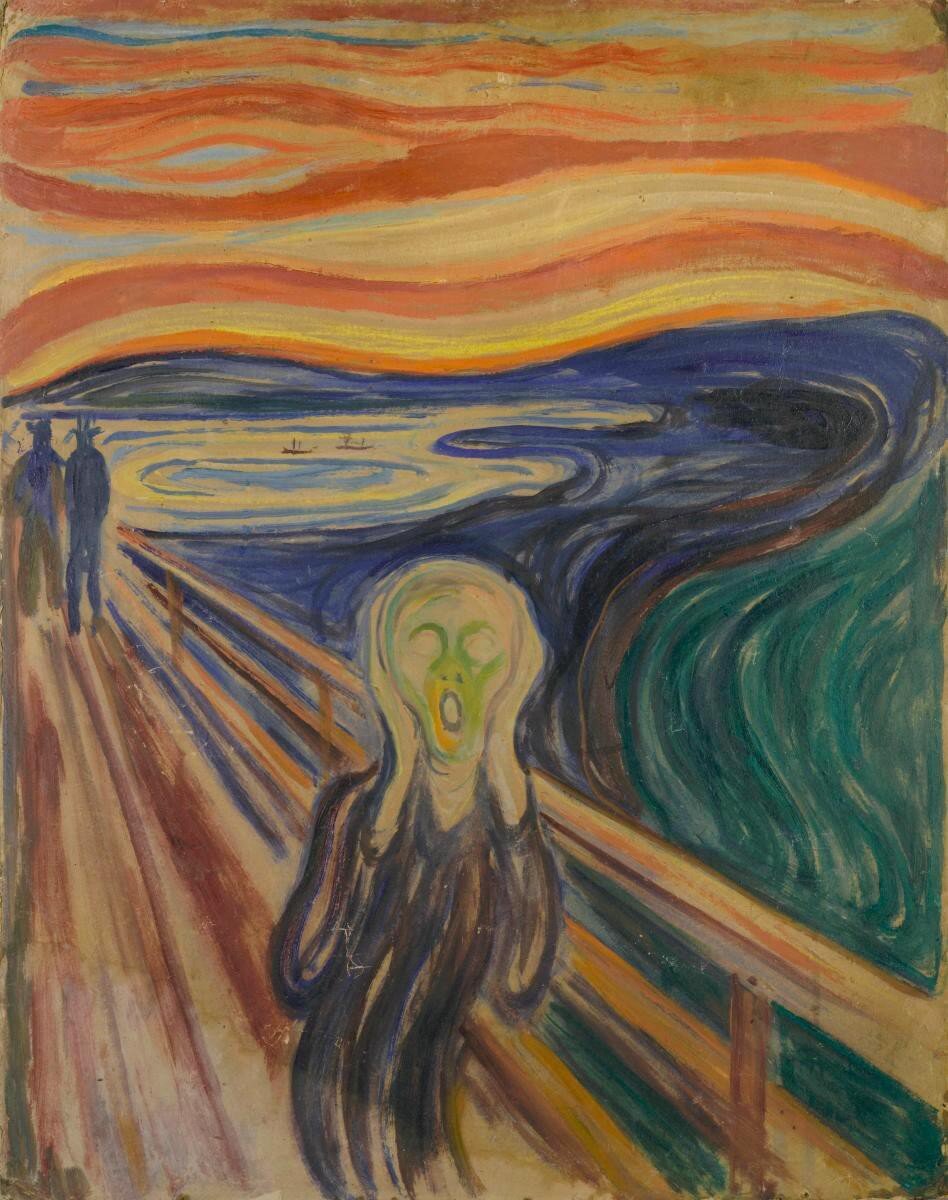Do You Know The Story behind This Famous Painting?
The Scream, oil on board, 1910 (Munch Museum Oslo)
You may have seen this image, it’s quite famous, but do you know who painted it?
The Norwegian artist, Edvard Munch, was one of the most prolific, innovative and influential figures in modern art.
Upon his death in 1944, at the age of 80, the authorities found a collection of 1,008 paintings, 4,443 drawings and 15,391 prints; As well as woodcuts, etchings, lithographs, and photographs.
So why do most people only know this one painting?
The Scream painting is of a genderless person, a twisted figure with mouth and eyes open wide in a shriek of horror. The sky and water are swirling in the background, with two other people disappearing into the distance.
Can you feel it?
Munch’s ability to capture the heightened tension of anxiety and uncertainty has connected with the collective soul of our modern age. Munch believed that a painter mustn’t merely depict scenes from everyday reality; art should transmit emotional sensation.
The Scream references an experience Munch had one evening. He was walking along at sunset by the fjord, with two friends, when he was overcome with a vision, “Life had ripped open my soul.”
“I was walking down the road with two friends when the sun set; suddenly, the sky turned as red as blood. I stopped and leaned against the fence, feeling unspeakably tired. Tongues of fire and blood stretched over the bluish-black fjord. My friends went on walking, while I lagged behind, shivering with fear. Then I heard the enormous infinite scream of nature.”- Munch.
Is nature screaming now, as we huddle inside and isolate ourselves from life? I’m feeling the pain. Edvard Munch used art to visually portray his emotional expression, and it connects with us all.
Expressionism
Munch was a forerunner of Expressionism. This was a moment in art history when artists were no longer interested in the technical skill of realism but wanted to convey inner thoughts, feelings and emotions. This they achieved through the use of bright, exaggerated colours and simple shapes.
Born in 1863, in Löten, Norway, Munch had a troubled childhood. His mother died with tuberculosis when he was 5 years old, and his sister followed when he was 15. Through his own constant sickness, the fear of death haunted him, and mental illness plagued his family. Art became his refuge for outworking his emotional trauma. He allowed his personal tragedies, sicknesses and failures to feed his creative work.
“My fear of life is necessary to me…, my sufferings are part of my self and my art.” — Munch
Munch made two oil paintings of The Scream, two pastels and numerous prints of the image. The two paintings belong to Oslo’s National Gallery and the Munch Museum. Edvard Munch reached certain notoriety during his lifetime, although he never found the solace that he sort. He never married and claimed that his paintings were his children.
The Exhibition that launched ‘The Scream’
From 1889 to 1892, Munch lived mainly in France and embarked on his most productive, although the most troubled period of his artistic life. He undertook a series of paintings called the “Frieze of Life”. This collection, including 22 works for a 1902 Berlin exhibition, displayed Munch’s psychologically charged and expressive style.
His passion for transmitting emotional sensation through his art was depicted by titles such as ‘Despair’ (1892), ‘Melancholy’, ‘Anxiety’, ‘Jealousy’ and ‘The Scream’ (also known as ‘The Cry’, 1893). This painting would go on to become one of the most famous paintings ever produced (source).
The style with which Munch created each painting varied greatly, depending on which emotion he was expressing. This collection was a huge success, and the exhibition helped to establish Munch in the art world.
During his lifetime, however, happiness was a brief and fleeting experience. He suffered greatly from the consequences of excessive drinking, family illness and mental distress. Munch spent his later years in isolation at his country home in Ekley. He painted right up until his death and often depicted his deteriorating physical condition.
“In May 2012, Munch’s “The Scream” went on the auction block, selling at Sotheby’s in New York for more than $119 million — a record-breaking price — sealing its reputation as one of the most famous and important works of art ever produced.” (source).
How did ‘The Scream’ become so famous?
You know you have ‘made it’ when your art has been stolen.Today’s cult following of The Scream started 25 years ago, on 12 February 1994, when thrives broke into Norway’s National Gallery and stole the 1893 original painting. Detective Charles Hill, who was sent to Oslo from Scotland Yard’s specialist art squad to help get it back, remembers that it was not a very impressive heist: “It was two men and a ladder.”
The painting was recovered 3 months later, and the notoriety of the theft put a spotlight on the masterpiece. In 2004, masked gunmen seized Munch’s second painted version of The Scream from the Munch Museum in Oslo. This time the painting received some damage, and it took longer to retrieve, some 2 years later. Art theft is no joke, but “you know you’ve made it when the criminal community rates your works theft-worthy”, said Detective Hill.
The language of emotional connection
Did Munch literally hear a scream from around him or was the experience an outworking of his own mental distress?
“I felt a great scream — and I actually heard a great scream — The colours of nature broke up — the lines of nature — the lines and the colours — quivered in motion — These oscillations of light not only caused my eye to vibrate — they also brought my ear into vibration — so that I truly heard a scream — I then painted the picture Scream.” — Munch
The painting is a radical and timeless expression of human fear and anxiety, universal in its meaning. The ambiguity of the subject’s gender helps to solidify our collective connection to the artwork. We all feel fear, and through the uncertainty of our present time, this image has become an icon.
“It is a symbol we reach for as we might for a strong word, to express what we’re feeling this minute” — Johnathon Jones.
Everybody copies a genius
The success of this image to transmit the desired emotional effect can be seen through the many parodies of The Scream. The popularity of the image has permeated every aspect of pop culture, from film and TV, to tattoos and memes.
The Scream was referenced by Macaulay Culkin in Home Alone; the Ghostface mask in the Scream horror franchise, and Doctor Who, in The Silence. Even Homer Simpson has referenced this artwork.
“This is the key to The Scream’s universal appeal, states art critic, Jonathan Jones, by removing all individuality from this being, Munch allows anyone to inhabit it. He draws a glove puppet for the soul.”
Now, it has also been recreated as an emoji — ‘face screaming in fear’. It has become the ultimate image of the existential crisis.
If you’re feeling it, go ahead and, you know… 😱😱😱😱😱😱
Froyle Davies
I’ve been a visual artist for over 25 years and now I tell my stories.
Let me inspire you with this beautiful free print, ‘Above the Stormy Waters.’
Cheers Froyle


